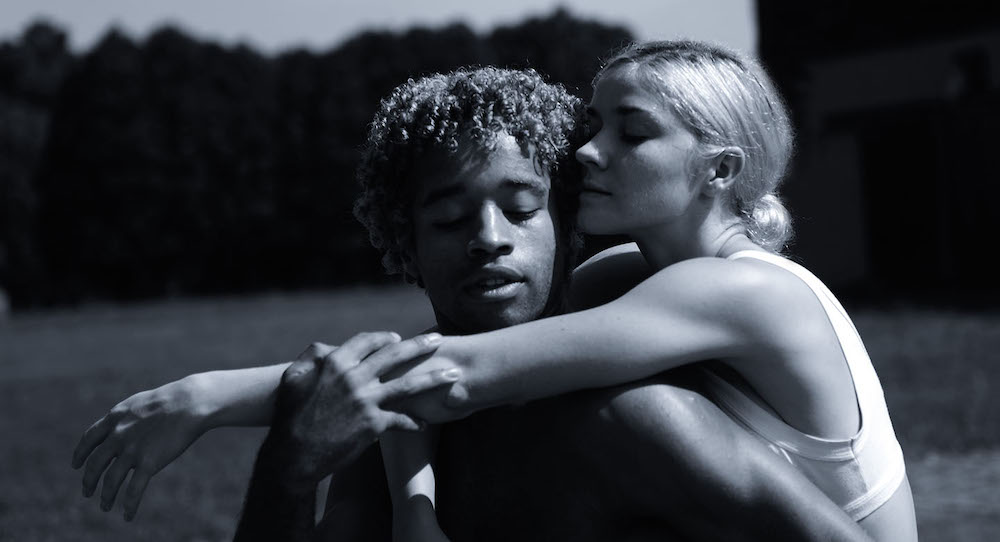Available to stream through abt.org and YouTube.
How the dance world has moved forward through COVID is complex and layered. Yet, simply put, despite all the challenges in the way dance artists have continued to come together and create. Through all of the difficulty, there is hope and beauty within that. Artists need to create, so they do, come what will. Two dance films that are freely available on American Ballet Theatre (ABT)’s website — one out of the professional company and one out of the ABT Studio Company in collaboration with the Collective Conservatory — demonstrate these truths. In doing so, these works can inspire and uplift dancers and non-dancers alike.
The Ritual (2020) exhibits a pared-down, no-frills connection between two people — one that surfaces larger, more layered questions about this time we’ve been in, dedication, spirituality and more. ABT Soloist Gabe Stone Shayer choreographed the work, which is part of a larger work he choreographed over the summer. Matt Donnelly of Laneway Media is responsible for video. Indie rock-style music (“Góða Tungl” by Samaris), with a single chanteuse sharing pain and joy, supports the work’s ambiguity and theatricality — danced by Shayer and ABT Principal Cassandra Trenary.
It toggles between two different aesthetics through interspersed shots. One is bright and light: light-colored clothing, bright lighting, green trees and light-colored pebbles underneath. The other is darker: a darker filter over the camera, dancers wearing black and dancing in the Lincoln Center reflecting pool (with a black bottom). Although this stark aesthetic contrast characterizes much of the work (and does so to intriguing and satisfying effect), the movement hums along consistently: serpentine, at times curved and at times angular, at times lifted and at times weighted.
At one point, the dancers both executed beautiful long arabesques, beautiful enough to make me crave more of that. As it is, the movement offers technical command and passion. There is also a memorable close-up of them gesturing, touching forearms, wrists, hands, slowly and intentionally. I wonder what more of those sorts of shots could have added to aesthetic, tone and the felt sense of the connection between the two dancers.
The ending is striking; they hold hands while walking and looking up at Lincoln Center, complete with a bright light emanating from it. Is this a commentary on wanting to get back to the grandeur of the stage in these times, looking to a higher power or something else entirely? The title also feels significant, with respect to meaning; I think about the ritual of training, rehearsing, improvising, creating. Although these two dancers can’t dance in that hallowed building, towering over them and shining with a bright light — but they will still dance, together.
Visceral Harmonies began with students of the Collective Conservatory, under Steven Hackman, creating music together virtually based on their daily lives mid-COVID. Inspired by their composition, Amy Hall Garner choreographed a work to it for the ABT Studio Company. The work begins slowly, reflectively, just as the score does — with one dancer tracing their fingers along the ribs of a wooden staircase railing.
Following that, dancers move in and out of the studio (from beach to lake to forest to backyard). They all dance alone, all with their own unique qualities, ranging from classical to contemporary and their unique mixes thereof. Common to all of them is just being lovely movers and fascinating to watch, perhaps precisely because they dance in their own unique movement qualities.
Their youth also strikes me, and I reflect on the inherent effects of COVID-19 on the next generation of leaders, thinkers and changemakers. Yet, with the joyful presence and capability of these dancers — from long lines to deep centeredness beyond the physical — I feel hopeful rather than despondent. The score, a young person singing about times together laughing and enjoying one another, also has a somber feel yet also an air of hopefulness.
The end has all participants together on a Zoom screen clapping and celebrating their accomplishment. It’s a wonderful humanizing of the artists behind this memorable work, one that brings further joy and hope. Coming together to create art, even if through the constraints of a global pandemic, can bring those gifts. Artists always will do that, through whatever they face — and, as the world moves forward from this time, that’s a special thing not to take for granted.
By Kathryn Boland of Dance Informa.















